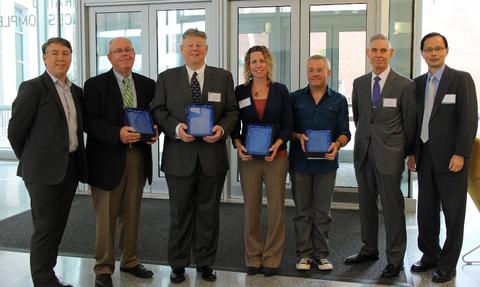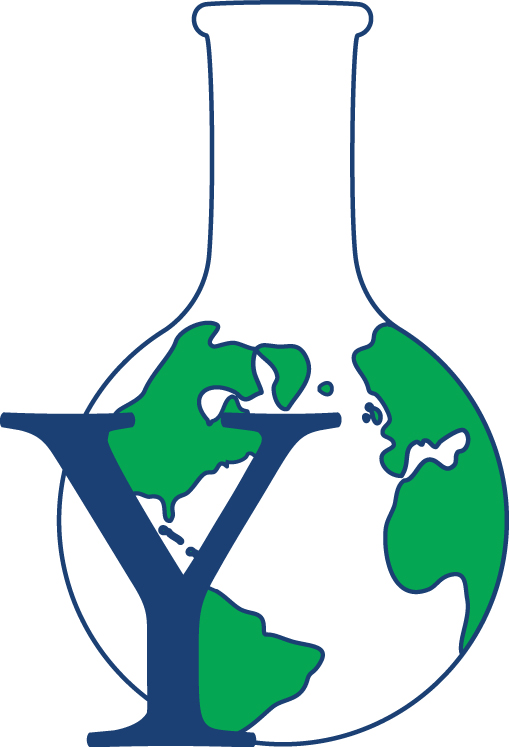
Pictured: UMB alumni award recipients Berkeley Cue, Nicholas Anastas, Amy Cannon, and John Warner (starting 2nd from left) along with Paul Anastas (left) and Robert Carter and Wei Zhang (right)
The development of the field of green chemistry was possible because of individuals in academia, industry, government and NGOs who dreamt big and devoted their professional life to advancing and promoting Green Chemistry. Through their continuous work and commitment, these individuals impacted and shaped Green Chemistry science and education. They innovated, raised awareness and outlined endless possibilities in Green Chemistry through their words and actions.
Many of the early Green Chemistry innovators can trace their roots back to the University of Massachusetts Boston. Four notable Green Chemistry leaders, Drs John Warner, Amy Cannon, Nicholas Anastas and Buzz Cue were students at University of Massachusetts Boston. UMB was not only place where they developed everlasting friendships but more importantly it is where they developed their passion for science.
On September 18, 2016 these Green Chemistry pioneers participated in an event at their alma matter in celebration of 25 years of Green Chemistry field. The event was co-organized by Dr. Wei Zhang, who is the director of the Center for Green Chemistry at UMB.
The event started with a warm welcome from UMB Provost, Winston Langley, UMB Vice Provost for Research & Strategic Initiatives Zong-Guo Xia and UMB Chemistry Department Chair, Robert Carter. The welcome remarks were followed with talks by UMB distinguished alumni, who reflected on their career paths in Green Chemistry, and their recent work. John Warner talked about green chemistry and entropy relationships and how this concept drives his work at the Warner and Babcock Institute. Buzz Cue presented his work at Pfizer to develop greener processes to produce Zoloft - an antidepressant and selective serotonin inhibitor. Nick Anastas and Amy Cannon focused on a variety of educational opportunities to incorporate green chemistry and toxicology concepts into the modern school curriculum and chemistry community. This event appropriately acknowledged the work of the early green chemists who dared to be different and worked in the green chemistry realm when it was a very young field.
